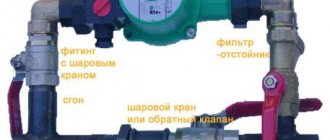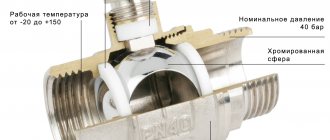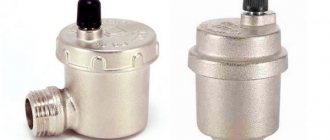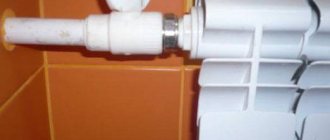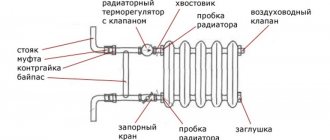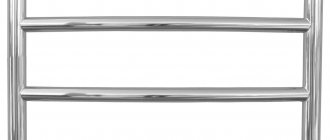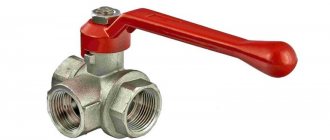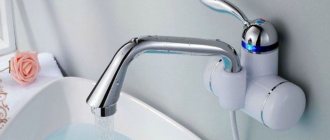Causes of hum
The most common causes of rattling are:
- Poor quality repairs. A hum in an apartment is often associated with loose pipe connections or poor quality installation.
- Excessively high pressure in the water supply. The noise intensifies after turning off the water in the tap. This acoustic effect may be associated with repair work on the highway. In this case, only the management organization can fix the problem.
- Reducing the internal diameter of pipes. If engineering communications have not been repaired in a private house for a long time, then such a phenomenon as noise is quite understandable. Over time, pipelines become overgrown with rust and salts, as a result of which their diameter decreases. At the same time, the water pressure remains the same, which causes noise.
- Plumbing faults. Noise can be caused by faulty taps and mixers. These could be failed valve axle boxes and incorrectly installed or selected gaskets. In such a situation, the noise will be heard in all apartments on the riser. To identify the problem, it is necessary to sequentially turn off the inlet taps in each apartment on the riser.
Let's look at each problem in more detail.
Causes of sounds from water pipes, or Why water pipes hum
Most often, the cause of unpleasant sounds in pipes is poor gaskets installed in the plumbing. The sound appears as a result of the resonance of the vibrations of the gaskets and water running through the pipes. Resonance amplifies the sound and carries it throughout the house. In this case, it can be extremely difficult to identify which of the residents in the house has problematic plumbing installed.
If the pipes in the house do not hum constantly, then the cause of the noise is, as a rule, water filling the drain tank of one of the apartments or the opening of a water tap by a resident.
If the humming is observed constantly, then its cause is differences in pressure in the cold and hot water risers. Liquid is squeezed out from one riser to another through a broken tap in one of the apartments. Sometimes valves can be broken in several different apartments at the same time.
Why do water pipes hum when you turn on the tap? The problem probably lies in a poor-quality or deformed gasket. To eliminate noise from water pipes, plumbers with many years of experience recommend starting the fight against this unpleasant phenomenon by finding and replacing a poor-quality gasket.
Poor quality repairs
If a hum is heard when you turn on the tap several times a day, then it is very likely that someone in the neighborhood recently repaired the water supply. It is very possible that plumbing repair specialists replaced pipes in the basement. There was some mistake in their work. For example, connections are not made securely. In this case, it is very easy to level out the unpleasant buzzing. For this purpose, all installation errors are eliminated.
Another reason for noise from water pipes is that the pipes are installed close to each other. The thing is that when water passes through a pipeline, vibration is created, as a result of which the pipes, in contact with each other, hum. To eliminate noise, simply wrap each pipe in foam insulation.
Ways to eliminate hum
Eliminating humming pipes in the bathroom is not difficult. You just need to find where there is unstable pressure (it doesn’t matter whether it’s a pipe with hot or cold water).
To do this, you just need to listen to the sounds that need to be created by lightly tapping the pipe with a blunt object, for example, the back of a screwdriver. Sounds such as humming, whining, or tapping can be the source of various problem areas in the pipeline, especially hot water.
Among other things, it is recommended to check the serviceability of the following plumbing fixtures in the apartment:
- valves (taps) at the entrance to the apartment;
- valves (taps) in the basement that shut off the water of your particular water riser;
- shut-off valves for the toilet cistern;
- faucets in the bathroom or kitchen;
- shower switch;
- geyser or electric heater.
High internal pressure
The pressure force can be easily determined by the water pressure. If you quickly open the taps, the pipes will hum when there is excess pressure. Excessively high pressure will eventually lead to rupture of pipe connections, and as a result, to depressurization of the water supply system.
To reduce the load on the pipeline and eliminate noise, install a faucet with an air chamber at the connection point, which will absorb excess water pressure.
You can make such a camera yourself. To do this, take an additional piece of pipe or a special factory muffler. Thus, the load on the pipeline will be significantly reduced and it will last much longer.
If you are not sure that you can do everything yourself, then seek qualified help. In addition, if the water pressure is excessive due to air impurities in it, then you will not be able to cope with the problem on your own.
The normal water pressure with pressure in the mixer is 2 atm. In this case, the dishwasher and washing machine will work fully. The limiting limit can be considered a pressure value of 6 atm.
Eliminating noise in water pipes
You need to start eliminating noise from the most likely places of its occurrence, and these are, as a rule, old risers of general building networks and consumer fittings - faucet, toilet cistern. The coordinated actions of the residents of the house will provide decisive assistance when the specialists begin to do their work.
When the inspection of the users’ fittings is completed, the last mixer is closed, and the system is still noisy, they begin to check the pipelines of the general house system. As soon as the area suspicious for noise is localized, it is removed and replaced with a new one, and the fittings in that area are sorted out.
Complex cases require creative approaches - from adjusting the water supply to the house to finding out the maintenance history of the problem area. Cases when the work of an emergency crew to eliminate an accident in a house caused noise are not so rare.
Noise requires a separate discussion when it occurs as a result of an unauthorized, unauthorized change in the system configuration during repairs. In these cases, a pipe that makes noise is a signal that it is necessary to check what unauthorized plumbers have done.
Reducing the internal diameter of pipes
Due to the reduction in the diameter of the pipes, a reactive flow of water is formed from the inside, creating vibrations that are responsible for the hum. How to diagnose in this case? To do this, you need to inspect the mixer after first disconnecting it. If you see dirt on the walls, this is a sign that the entire system is overgrown. Impurities contained in water are gradually deposited at the end sections of pipe systems. This means that you can still clean them.
Such blockages occur not only in steel pipelines, but also in polypropylene and plastic ones. This is due to the fact that the diameter of the pipe and hoses of the mixer is different, and this, as a consequence, leads to the formation of plaque.
Such blockages can be removed using pneumatic or hydraulic flushing. As a less effective option, mechanical cleaning can also be used.
Flushing involves the flow of a continuous strong stream of water through the water supply. Circulation and electric pumps are used to carry out flushing. It is worth noting, however, that this technique is ineffective when it comes to flushing large-diameter pipes. In this case, individual sections of the pipeline are flushed. The water drains from them, the pipe is disconnected, after which a specialist cleans the internal walls using a thick wire with a brush at the end.
If it is impossible to remove the blockage, the problem area should be disconnected from the general pipeline and replaced with a new one. Installation of a new pipe is carried out using special rubber seals.
Reasons for humming in pipes
The specific sounds produced by the pipeline can be temporary or permanent. There are three types of noise in pipes:
- Vibration vibrations.
- Knocking noise when turning on the faucet.
- A whistling hum.
The specifics of each type are determined by the nature of the noise effects, time and place.
If the pipes in the bathroom are humming, this may mean:
Increased pressure in the system
According to statistics, 50-60% of all problems and noise in the pipeline occur as a result of water hammer (sudden pressure surges). If turning on the faucet is accompanied by a strong, steady hum and vibration, then this is a sign that the system cannot cope with the water pressure. Exceeding the permissible pressure standards (over 6 atmospheres) causes depressurization of the pipe or its connections and can lead to rupture of the pipe sheet.
To eliminate the identified defect, you need to reduce the water pressure.
Special equipment will help protect the water supply from water hammer and minimize the consequences:
- The shock-absorbing block is a plastic pipe installed in front of the thermostat in the direction of flow. Its length varies from 30 to 40 cm depending on the length of the pipeline.
- A thermostat is a special protective device whose spring mechanism prevents the valve from closing during a pressure surge. It is installed between the valve and the thermal head.
- A hydraulic accumulator (water hammer compensator) is a device that accumulates liquid, takes away excess water and dampens a water hammer if it occurs.
- Expansion tank - the design keeps the pressure within normal limits. The reservoir has a simple design. Therefore, you can do it yourself.
Plumbing faults
Rattling in the pipeline can be caused by malfunctions in the water fittings. To fix the problem, turn off the water in the riser and carry out repair work. A malfunction in the mixer is also often the cause of the hum. It could be as simple as a worn-out gasket on an old-style faucet. The solution is no less banal - replacing the gasket and installing the tap in place. If the repair was carried out correctly, you will no longer hear the noise.
Malfunctions in the operation of axlebox valves and their characteristic noise occur only when old-style semi-turn or valve axlebox valves fail.
Single lever faucets and ball valves do not have gaskets to block the flow of water. This means that by their structure they cannot create a hum in any way.
This article discussed the most common causes of hum in a plumbing system. The information presented here should help you eliminate rattling pipes.
You might be interested in learning more:
- How to choose water pipes
- How to insulate a water supply
- How to lay water pipes in the ground
- How to install pipes in the bathroom
- What is the cause of knocking in heating pipes?
Causes of whistling water pipes
Characteristics such as frequency of occurrence, tonality, nature and presence of vibrations give an idea of what causes noise in the water supply. Let's look at why the faucet hums when you turn on the water, guided by knowledge of physics. The main reason is sound waves due to vibration, which appears due to:
- Quite a strong pressure in the pipeline - in this case, the sound will be heard when you open the mixer, not only in the entire entrance, but throughout the house. This may indicate possible damage to the pipeline in a hard-to-reach place. As a result, there is a possibility of expensive repairs for both you and your neighbors.
- Wear of the metal pipeline - a hum is heard when the tap is turned off due to the fact that lime and other deposits accumulate on the walls of the pipes, and also rust. This can also cause vibration and hum in the pipes when the water is turned on.
- Incorrect connection of pipes during installation is a fairly common cause of an unpleasant hum. Therefore, if the water tap starts to hum when turned on, you need to check all connections between the pipes and elements of the system.
- Wear of the gasket is the most obvious malfunction; because of it, the water supply tap not only makes whistling and humming sounds, but in addition also leaks.
- Incorrect installation of the valve results in an unpleasant knocking sound in the pipes. Due to incorrect installation of the screw valve, the valve comes off quite often. The valve hits the inner walls of the pipe, and as a result, blocks the flow of water.
Helpful advice! A hum in pipes is a fairly common phenomenon in private systems or new homes. These sounds from the water supply most often indicate poor-quality repairs, after which the pipes are located very close to each other. This sound comes from the contact of vibrating pipes. To solve this problem, each pipe must be wrapped in foam insulation.
